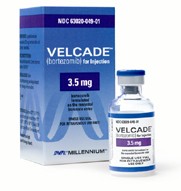
Recently Diagnosed or Relapsed? Stop Looking For a Miracle Cure, and Use Evidence-Based Therapies To Enhance Your Treatment and Prolong Your Remission
Multiple Myeloma an incurable disease, but I have spent the last 25 years in remission using a blend of conventional oncology and evidence-based nutrition, supplementation, and lifestyle therapies from peer-reviewed studies that your oncologist probably hasn't told you about.
Click the orange button to the right to learn more about what you can start doing today.
- You are here:
- Home »
- Blog »
- Multiple Myeloma »
- Myeloma Clinical Trials- Misleading at Best, Dangerous at worst…
Myeloma Clinical Trials- Misleading at Best, Dangerous at worst…

“In the multiple myeloma setting, patients tend to be older and with more comorbidities, which often prevents them from enrolling in a trial. Therefore, myeloma clinical trials are incomplete.
According to research, the average multiple myeloma (MM) patient is a 70 year old black male. A third of all MM patients are 75 or over. Multiple Myeloma is, on average, an old person’s disease. If I read between the lines of the study linked below, the oncologist Ajai Chari, MD is saying this.
According to Ajai Chari, MD, the real world of multiple myeloma patients are:
- In the myeloma setting, patients tend to be older and with more comorbidities…
- MM patients may be frail and
- MM patients may be 80 or over
Dr. Chari, then, asks and answers and important question. ““How many 80-plus-year-olds are included in clinical trials? Almost none…” Unfortunately, oncologists have to produce the results needed to get FDA approval but those results are different than the real multiple myeloma (MM) world.
Or to be painfully blunt, the newly diagnosed MM patient shouldn’t expect his/her actual results to be the same results given to him/her by the oncologist. If MM patients and survivors draw on information from clinical trials to make treatment decisions for themselves, and they are over 80, are frail or have co-morbidities, the clinical trial data does not apply to them.
Chemotherapy triplets such as Revlimid, Velcade and Dexamethasone (RVd) may result in a longer PFS for a MM patient compared to Revlimid and Dexamethasone (Rd) but at the same time, triplets, on average, are more toxic and can cause more side effects.
If you are an older MM patient, perhaps with frailties and co-morbidities, learn about and consider evidence-based nutrition, supplementation and lifestyle therapies that can treat your MM without toxicity.
To learn more, scroll down the page, post a question or comment and I will reply to you ASAP.
Thank you,
David Emerson
- MM Survivor
- MM Cancer Coach
- Director PeopleBeatingCancer
Recommended Reading:
- Why Multiple Myeloma Patients Can’t Trust Conventional Cancer Research
- Clinical Trials for Myeloma Patients? What Happens When Results are Bad/Not Published?
- Multiple Myeloma Clinical Trial? Understand Pros and Cons
How to Measure Real-World Data Against Clinical Trials in Mutiple Myeloma
“Clinical trials are the driving force behind most oncology discoveries and FDA approvals; however, strict eligibility criteria restrict many patients from participating, potentially leaving out large groups of people, according to Ajai Chari, MD.
In this situation, having real-world data becomes an invaluable resource in determining the efficacy of certain drug regimens, he added.
In the myeloma setting, patients tend to be older and with more comorbidities, which often prevents them from enrolling in a trial. Recent research presented at the 2019 European Hematology Association Congress examined the real-world outcomes of patients with relapsed/refractory myeloma treated with lenalidomide, bortezomib, and dexamethasone – a regimen referred to as RVD – compared to bortezomib plus dexamethasone (BD).
In the overall study population, the RVD triplet improved progression-free survival (PFS) by an average of 26 months. Patients who may have also been considered frail, including those who were over the age of 80 or had a Charleston Comorbiditiy Index (CCI) and ECOG scores over 2, also saw similar benefit.
“Often, these 3 groups of patients are not included in studies, so you really don’t know what the data are,” Chari, study author and associate professor of medicine, hematology and medical oncology at Icahn School of Medicine at Mount Sinai, said in an interview with OncLive, a sister publication of Oncology Nursing News.
“How many 80-plus-year-olds are included in clinical trials? Almost none,” he added. “So it’s good to see that this triplet therapy in the real world also still contributed to improved clinical outcomes.”
Chari did mention, however, that it is important for clinicians to scale back the dosing of these drugs, when appropriate.
“It’s important to use dose attenuation with these regimens to make sure that patients are tolerating them well,” he said. “But clearly, dose-attenuated RVD can be very well-tolerated and associated with excellent outcomes.”
Looking ahead, Chari emphasized that it is crucial for researchers and clinicians alike to pay attention to real-world data in addition to the results of clinical trials. While this should be done in all cancer spaces, it is particularly important in the myeloma setting.
“In general, we’re learning more and more that clinical trials are really important to get drugs approved, but we really do need to balance that with real-world evidence, recognizing the disparities between the 2,” he said. “We really need to broaden [clinical trial selection criteria], particularly in myeloma where patients are older. They’re going to have other cancers; they’re going to have renal dysfunction. If we’re not allowing these patients [on trials], how do we generalize study data to people we’re actually treating in clinic?”


